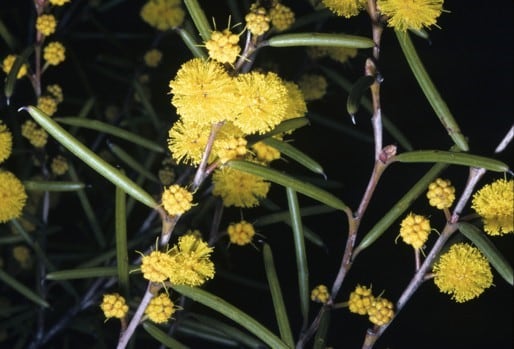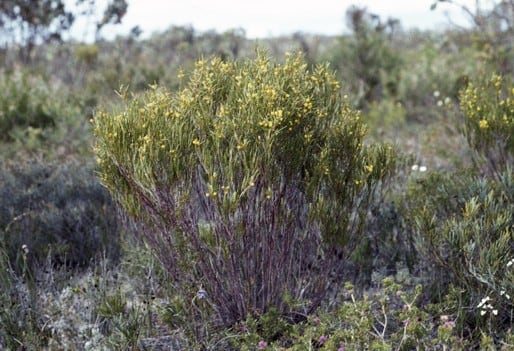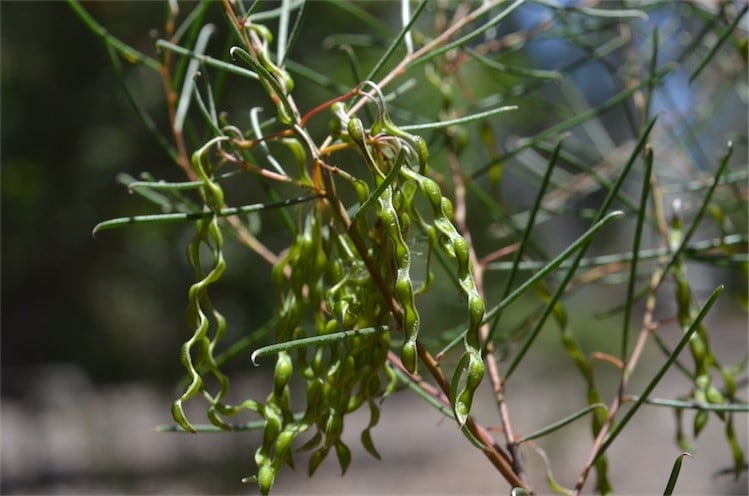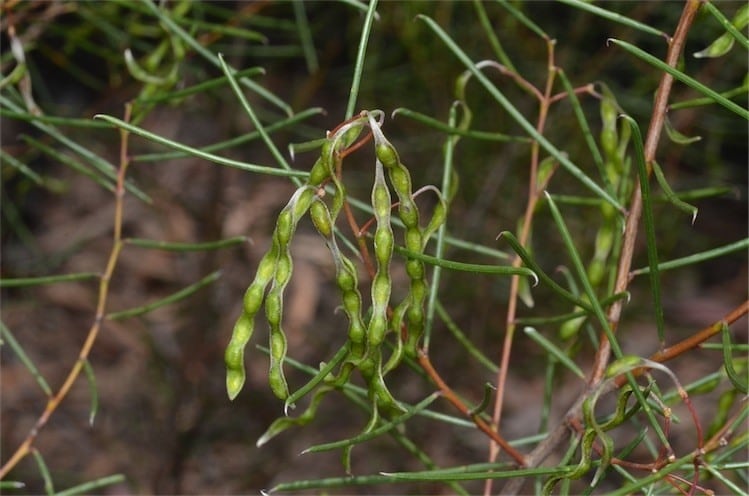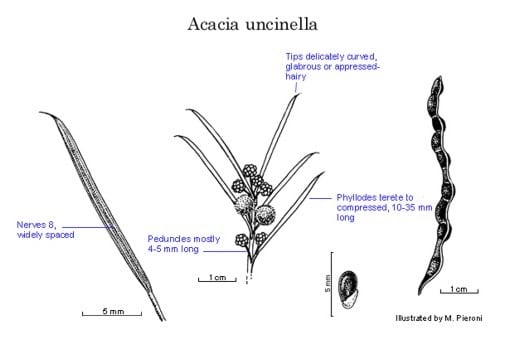Acacia uncinella Benth.
WATTLE
Acacias of Australia
Family
Fabaceae
Distribution
Most common from Ongerup, E to Wittenoom Hills (c. 50 km NNE of Esperance) and N to Anderson Rocks (c. 30 km N of Hyden). Four populations from slightly N of this range have been found near Merredin, Trayning, Bungalla (c. 10 km E of Kellerberrin) and Boorabbin (c. 80 km E of Southern Cross); a collection from Buningonia Spring, S of Zanthus (c. 185 km NE of Norseman), represents the documented easternmost limit of the species.
Description
Shrub 0.3–3 m high. Branchlets terete to weakly angled, glabrous or ±villous to appressed-puberulous and glabrescent. Phyllodes straight or shallowly curved, terete to compressed, 1–3.5 cm long, 0.7–1.5 mm diam., ±gradually narrowed to a rather delicate curved acute to shortly acuminate (0.8–1.5 mm long) glabrous or appressed-puberulous tip, glabrous (sometimes villous on new shoots), with 8 distant raised to plane nerves (often obscured by surface wrinkling in drying), 3-nerved per face when compressed; gland single, 4–11 (–20) mm above pulvinus. Inflorescences simple, 2 per axil; peduncles (2–) 4–5 mm long, puberulous to appressed-puberulous or glabrous; heads globular, 2.8–4.5 mm diam., 16–30-flowered, golden. Flowers 5-merous; sepals free; petals c. 1/2-united, occasionally free. Pods linear, slightly raised over and constricted between seeds, straight, 4–5 cm long, 2.5–3.5 mm wide, thinly crustaceous, glabrous or ±appressed-puberulous. Seeds longitudinal, elliptic or oblong-elliptic, 2.5–3.5 mm long, subglossy, mottled, nigrescent; aril subterminal, crested.
Habitat
Grows in white or yellow sand, sandy loam or loam, on sandplains or hillslopes in undulating country, in Banksia –Casuarina scrub and Eucalyptus scrub-woodland.
Specimens
W.A.: near Boorabbin, T.E.H.Aplin 1935 (B, G, K, NSW, PERTH); 1 km E of Lake King, 6 Oct. 1975, B.R.Maslin 3864 (CANB, K, MEL, NSW, NY, PERTH); c. 3 km N of Bungulla towards Wyalkatchem, B.R.Maslin 3390 (AD, BRI, CANB, G, MO, NSW, PERTH); Hatter Hill, K.Newbey 3295 (MEL, MO, PERTH); 18.5 km N of Hyden on road to Anderson Rocks, J.G. & M.H.Simmons 1309 (PERTH); 33 km E of Lake King at No. 1 Rabbit Proof Fence, P.G.Wilson 5750 (K, NSW, PERTH).
Notes
The Maxwell collection from W. tributary of Oldfield R. cited by G.Bentham, Fl. Austral. 2: 341 (1864), is A. ophiolithica.
A population centred on Lake King has the flowering branchlets, pulvinus and peduncles white-hairy, fide R.S.Cowan & B.R.Maslin, Nuytsia 10: 249 (1995), for discussion.
A member of the ‘A. fragilis group’, very closely related to A. fragilis which is somewhat arbitrarily distinguished by its longer phyllodes with elongate, tapering acuminate, persistently pubescent apices, generally free petals, and brown seeds. Also related to A. consanguinea and A. ophiolithica.
FOA Reference
Data derived from Flora of Australia Volumes 11A (2001), 11B (2001) and 12 (1998), products of ABRS, ©Commonwealth of Australia
Author
Minor edits by J.Reid
R.S.Cowan
This identification key and fact sheets are available as a mobile application:
URL: https://apps.lucidcentral.org/wattle/
© Copyright 2018. All rights reserved.
